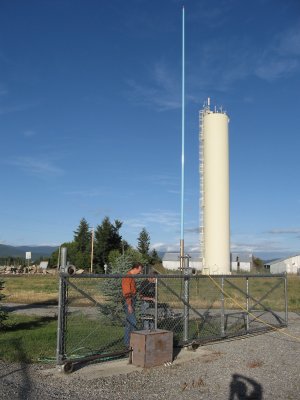
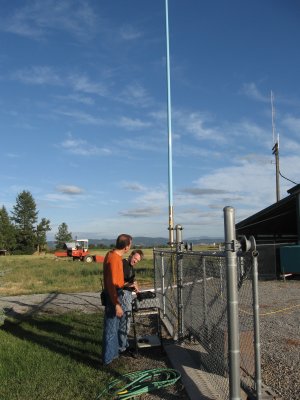
Introduction
The Author's place is on a plateau, with a 360° view and a 10-acre field for antenna R&D. Previous testing over the years was done near the house. In the background of the right picture was one of the structures for testing antennas; the other R-25 tower is not in view. For general "tests" the Author mounted the antenna to a fence post while using the vehicle for a power and RF transmitter source and a general "table" to spread equipment for this procedure. The metal fence can actually help make a ground plan with signal tests later. The watt meter could be nicely hung on the fence as well. Like the other evaluation document this page was quickly "thrown" together in one evening; it may be changed, later.
The Research
The HUB repeater that connects the out of town 80/20 coverage may have a bad antenna. It's an old Andrews out of commercial service and its been in SRG's operation for anther 15 years or so. Time to replace it. After the Telewave evaluation (on a separate document on this site), the Author did some research on his old supplier of Sinclair and was able to get a fairly decent price on the model SC320-SF4NM. It was spec at "440-450 MHz". The same two main criteria were the length needed to be about 20 foot (for mounting top and bottom) and good gain, because one of the link paths was 156 miles. My bud Doug offered to help pay for the antenna, so with shipping we spent about $1,400 on the package. The antenna came in the usual long cardboard "tube". Speaking of usual, the usual "goons" at Fed Ex came close to running over the tube. This was evident from the scuff marks on the tube's outside, but the antenna was untouched. Sinclair does a nice job with this tube, coating it with a waxy substance on the outside for rain protection. It was carefully unpacked and temporarily mounted on the Author's testing truck mount.
The antenna was supplied with a "pigtail" terminated with an N male. Pigtails are nice so you don't have to seal the connector; up,inside the housing on the tower. Taping the tail to the line out in the open is a much easier task. In the permanent installation an outer mastic pad is layered with layer of Scotch "88" tape for good water sealing. Just as a side note, improper sealing against water is a good way to "kill" an installation over a season. These first pictures are the previous mounting/testing area from past years and shows a different brand from what was tested.


Since the last testing (Telewave article) the author built a handy pipe mount that fits in any vehicle's trailer receiver (2").
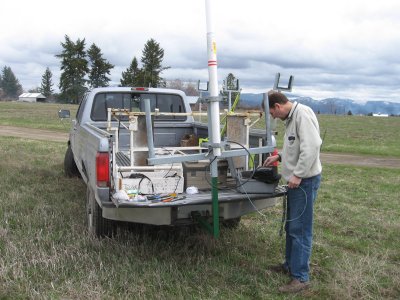
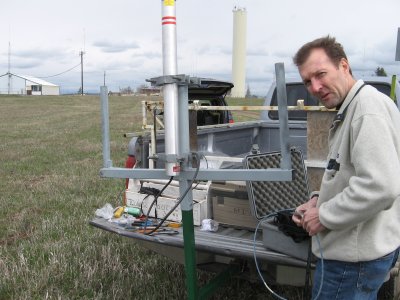
This allowed by tester to handle everything solo. R.L. measurement was made and field strength (gain) tests as well from distance stations using a mobile whip as a reference. Since this plateau is line-of-sight of the test signals made good data input. The picture indicates no radials, however they were installed (temporarily) for the tests.
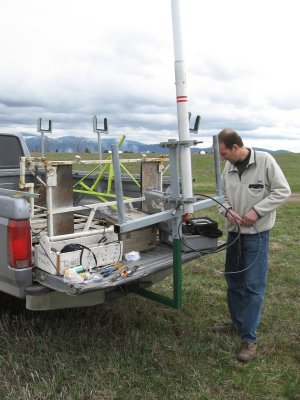
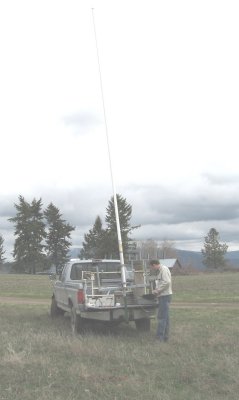
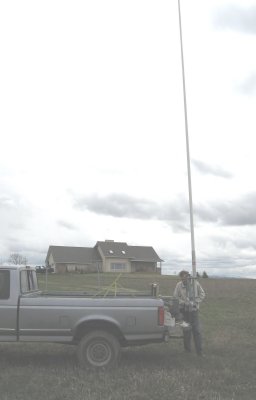
The sweep was excellent at amateur band, 70 cm. As you can see the overall is quite satisfactory from 440-450 MHz with a return of 17db. However, right at the one point it was incredibly high, like 45 db ! Way to go Sinclair !
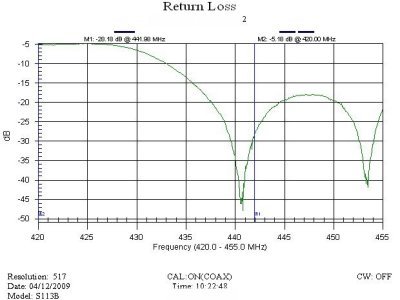
Conclusions: This antenna had excellent specifications for the amateur 70-cm band and the Author would recommend it for that use.
![[SRG home Direction]](images/srghome.gif)